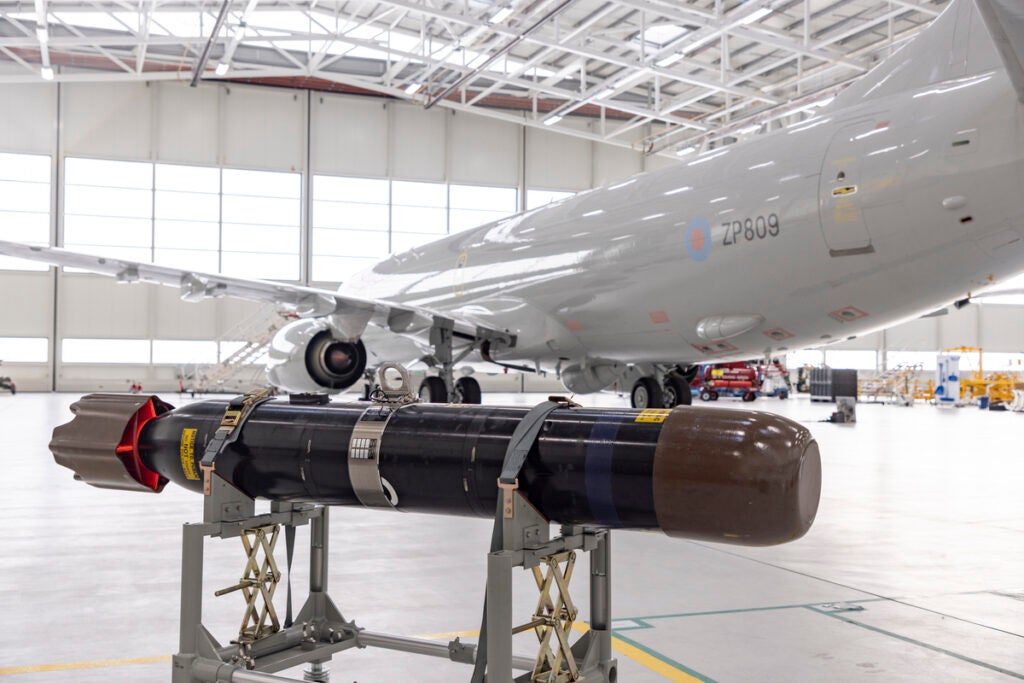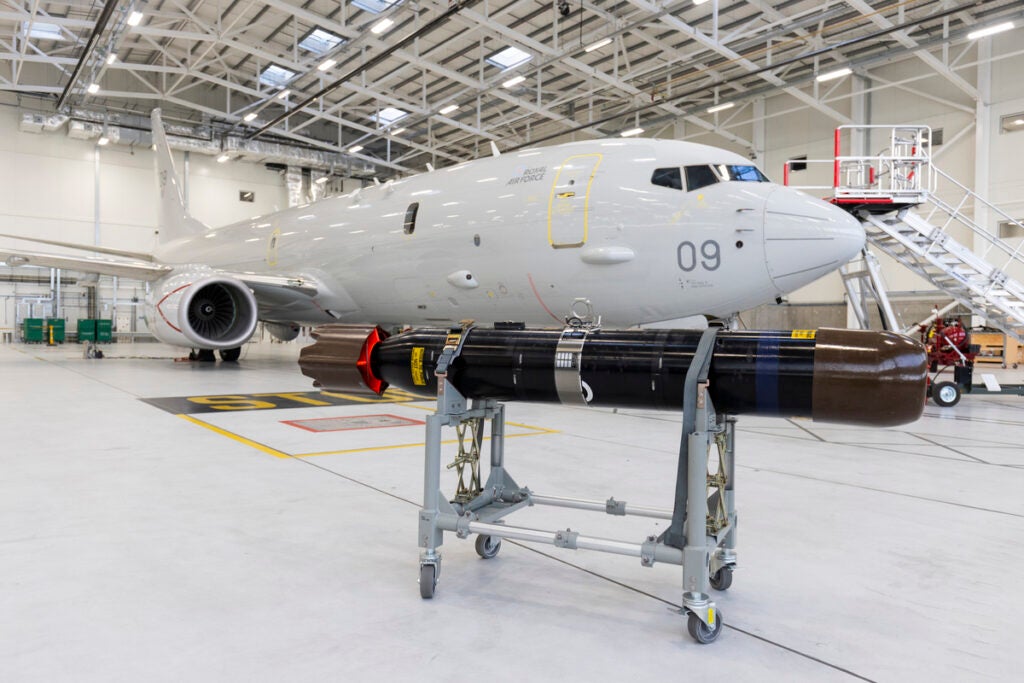Sting Ray Torpedo Integration On Royal Air Force Poseidons Underway
The Royal Air Force has announced that integration of the Sting Ray Mod 1 anti-submarine warfare torpedo onto its Poseidon MPA1 maritime patrol aircraft is now underway. Work to adopt the UK manufactured torpedo is being conducted at RAF Lossiemouth in Scotland, the home base of the Poseidon fleet.
The Sting Ray will complement the American-made Mk54 torpedoes currently used by the Poseidon fleet, with Poseidon Futures Programme Senior Responsible Officer, Group Captain Richard Osselton saying:
“The use of Sting Ray and Mk54 torpedoes gives the UK Poseidon fleet flexibility and interoperability with our allies. I’m delighted to see integration of Sting Ray Mod 1 has commenced at RAF Lossiemouth.”
The Sting Ray Mod 1 is currently in service with the Royal Navy, and is designed to defeat both fast, deep diving double-hulled submarines operating in the oceanic environment and quiet, conventional submarines in coastal waters. The torpedo is used for anti-submarine warfare by the Type 23 frigates, as well as the Merlin and Wildcat anti-submarine warfare helicopters. The original Mod 0 version of the Sting Ray was also used by the Poseidon’s predecessor, the Hawker Nimrod.

Compared to the Mod 0, the Sting Ray Mod 1 features a completely new sonar system, an insensitive munition warhead, a new tactical and navigation system and a new sea water battery system. According to manufacturer BAE Systems, the Mod 1 has low through life costs and requires no intrusive maintenance throughout its service life.
The RAF adds that the improvements capitalize on the investment made in the Mod 0 and its supporting infrastructure, sustaining Sting Ray’s position “as the world’s premier lightweight, autonomous underwater weapon, for decades to come.”
The RAF currently operates nine Poseidon MRA1s, with 120 Squadron and 201 Squadron both flying them out of RAF Lossiemouth. The first MRA1 was delivered in February 2020, with the ninth and final aircraft delivered in January 2022.

